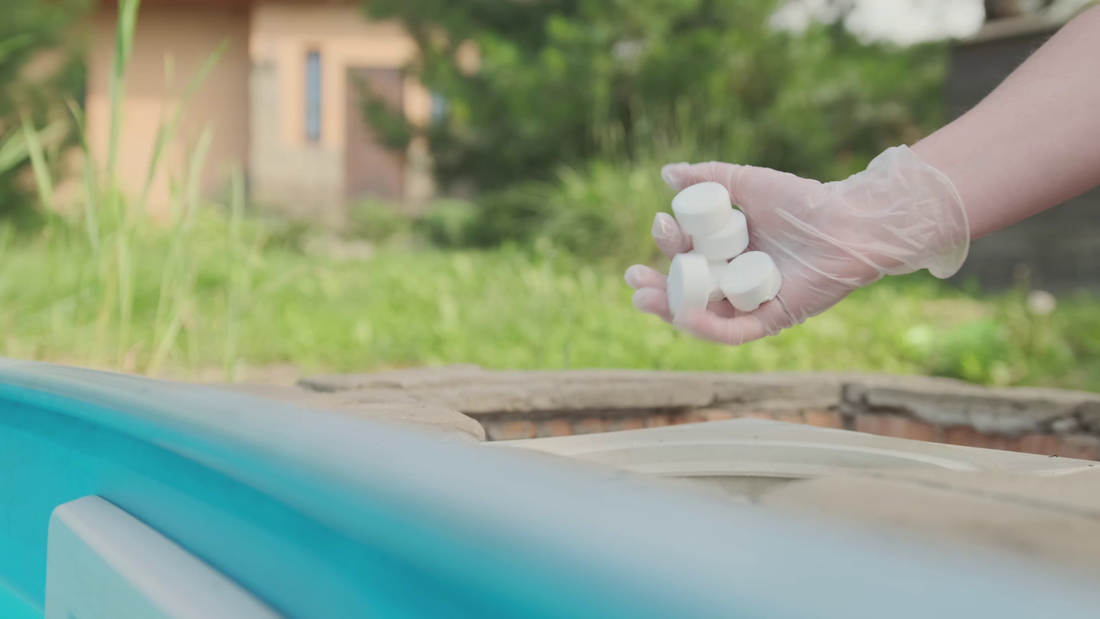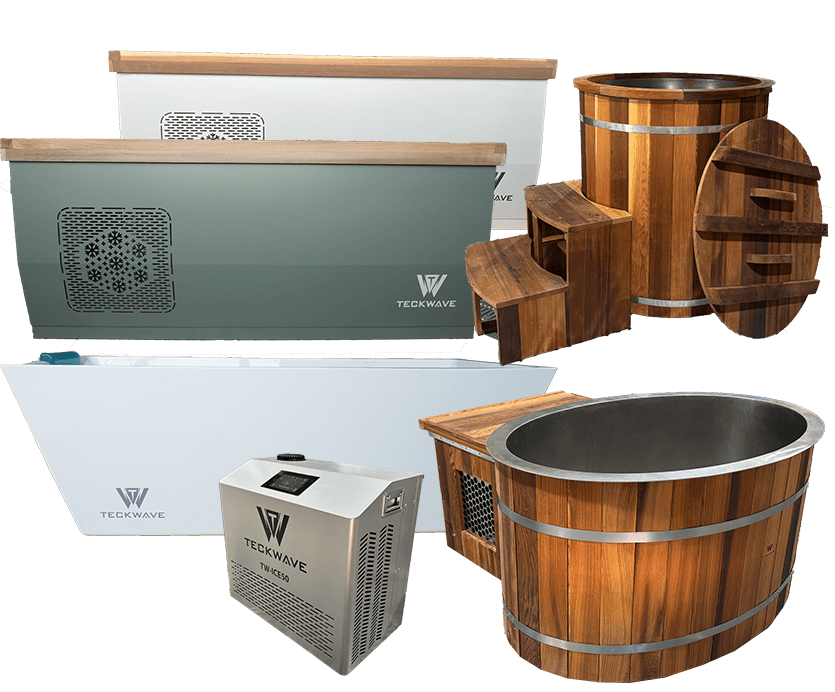Ensuring the cleanliness of your cold plunge or ice bath is crucial. There are diverse methods, ranging from mechanical filtration to chemical and non-chemical sanitization, that help maintain water quality. While some approaches prove highly effective for ice bath, others may fall short or pose risks in specific circumstances. In this discussion, I will explore a comprehensive range of options, sharing insights into my personal preferences and practices. Initially, I'll discuss the non-chemical filtration methods implemented in my chiller.
Chiller Filtration System
Chillers should typically include three stages of filtration: a metal mesh pre-filter, a 20-micron polymer main filter, and an ozone generator that oxidizes and eliminates bacteria.
A useful way to determine when to clean the mesh filter or replace the main filter is by monitoring the pump’s flow rate. That’s why we emphasize the importance of having flow rate sensors in ice bath chillers. If the flow rate drops by more than 3 to 4 liters per minute from the original level, it’s a clear sign that the filters need maintenance or replacement.
Ozone Generators
Furthermore, an ice bath chiller features a built-in ozone generator that produces O3 from the air and injects it into the water every 15 minutes. Ozone is a potent oxidizing agent and a robust disinfectant, effectively eliminating bacteria, viruses, and other microorganisms in the ice bath.
Unlike some traditional sanitizers, ozone does not produce any harmful disinfection byproducts, contributing to better water quality. Ozone can help eliminate unpleasant odors in the water, improving overall water quality in the ice bath. It can reduce the reliance on traditional chemical sanitizers, lowering the overall chemical load in the water.
Certainly, the inclusion of an ozone generator increases the cost of chillers. However, if you plan to change the water every 2 to 3 weeks, chemical sanitizers may not be necessary at all. In fact, some individuals successfully operate their cold plunge for several months solely relying on an ozone generator. In such cases, it's crucial to run the chiller 24 hours a day to ensure consistent water movement and ongoing sanitization. It's worth noting that ozone has a short half-life and does not offer a long-lasting residual effect in the water, necessitating continuous ozone generation for effective sanitization.
Typically, I operate my chiller for approximately 3 hours a day, and I opt to change the water every 3 months. Additionally, I make it a weekly routine to wipe the inside of the tub with a cloth to dislodge any algae from the walls and the floor. As an added precaution, I introduce some chemical sanitizers into the system.
Anti-Bacterial Filters
One of the most effective and reliable ways to improve the filtration and sanitization of your ice bath and chiller is by using 20-micron anti-bacterial polymer filters. These filters are infused with antimicrobial agents that help prevent the growth of bacteria in the water, especially on the filter surface itself. This significantly reduces the formation of biofilm and slime inside the filter, keeping it cleaner for longer and maintaining a more stable flow rate over time. With an enhanced filtration surface area, these filters offer superior water purification, longer lifespan, and less frequent replacement.

Other Chemical Sanitizers
Now, delving into other chemical sanitizers for ice bath, the primary options include Bromine and Hydrogen Peroxide.
Bromine
Bromine is a powerful sanitizer and is effective against a broad spectrum of bacteria, viruses, and algae in water. However, Bromine is less pH-sensitive than chlorine, meaning it remains effective over a broader pH range. This can simplify water maintenance. Also unlike chlorine, bromine tends to produce fewer disinfection byproducts, which can be an advantage in terms of water quality. Bromine remains stable at higher temperatures, making it suitable for use in hot water environments, such as spas and hot tubs. It typically has a milder odor compared to chlorine, which can be preferable for individuals sensitive to strong chemical smells. Bromine is more stable than chlorine in the presence of sunlight, making it last longer in outdoor pools exposed to sunlight.
Bromine tablets or granules may take longer to dissolve and activate in water compared to chlorine, meaning it may take a bit more time to see results. I certainly prefer Bromine to Chlorine.
Hydrogen Peroxide
Hydrogen peroxide is an effective oxidizing agent that can help break down and eliminate organic contaminants in the ice bath. Hydrogen peroxide breaks down into water and oxygen, leaving no residual chemicals in the water. This can be preferable for those who want a chemical-free or low-impact sanitization method. Also it does not produce the chlorine smell, making it a good option for those who are sensitive to strong chemical odors. The decomposition of hydrogen peroxide is non-toxic, and it does not produce any harmful disinfection byproducts in the ice bath. It is generally pH neutral, reducing the need for frequent pH adjustments.
Now on the cons, Hydrogen peroxide is definitely more expensive than traditional sanitizers. Hydrogen peroxide does not provide a long-lasting residual effect in the water, so continuous dosing may be necessary for effective sanitization. The effectiveness of hydrogen peroxide can be temperature-dependent, and its activity may decrease at higher water temperatures. Also, Hydrogen peroxide may not be as effective in controlling algae as some other sanitizers.
In summary, while Hydrogen Peroxide may not be as potent as Bromine, it stands out as the most hassle-free and least harmful chemical option. I personally use a 30% concentration available on Amazon, adding around 40 milliliters to my plunge every week—that's all it takes. To ensure effectiveness, you can use test strips to monitor the Hydrogen Peroxide concentration in the ice bath. Typically, a concentration of 30 to 100 ppm is recommended for optimal results.
UV Lights
Some chillers opt for UV light instead of an ozone generator. While UV light is a chemical-free method, its effectiveness raises questions. First, it's crucial that the UV light emits UV-C, not A or B. Additionally, the quality of the lamp is a key factor, and determining which ones genuinely work can be challenging. UV light effectiveness is also impacted by water clarity and quality, potentially proving less effective in cloudy water. Most notably, UV light appears to be less effective at lower water temperatures, which may be a crucial consideration for ice bath applications. Personally, I find more confidence in sticking with ozone generators for their proven efficacy.
Here's a summary of the various cold plunge sanitization options and my personal preferences. If you have any questions, feel free to ask in the comments section.





